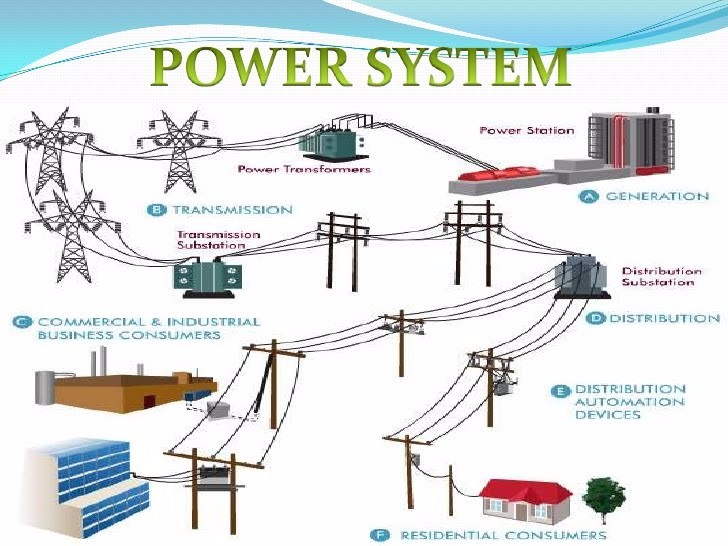What Are The Advancements In Electrical Engineering For Power System Optimization?
Power System Analysis and Design: A Comprehensive Overview Power System Analysis and Design is a critical topic in the field of Electrical Engineering. It is the process of designing, analyzing, and optimizing power systems to ensure a reliable, efficient, and cost-effective supply of electricity to consumers. Power systems include generators, transformers, transmission lines, and distribution systems, all of which work in unison to provide electricity to end-users. The aim of this article is to examine the essential components of Power System Analysis and Design, including load flow analysis, power system stability, and protective device coordination. Load Flow Analysis Load Flow Analysis, also known as power flow analysis, plays a significant role in ensuring that a power system operates reliably. It is the process of determining the voltage, current, active and reactive power flows, and losses in a power system under steady-state conditions. Load Flow Analysis helps engineers to determine the optimal operation of generators, transformers, and other electrical devices. The Load Flow Analysis process involves solving a set of simultaneous equations using numerical methods to determine the power flows and voltages in a network. The resulting values are used to identify any potential issues and recommend remedial actions, such as installing additional transmission lines or increasing the capacity of existing transformers. Power System Stability Power System Stability is essential in keeping a power system operational during disturbances, such as short circuits or outages. It refers to the ability of a power system to maintain stable voltages, current flows, and frequencies under varying operating conditions. Stability analysis involves modeling the power system and simulating its behavior under different conditions, such as sudden load changes or line faults. Power System Stability can be enhanced by installing power electronics-based devices, such as Static Var Compensators, which help stabilize the voltage levels in the system. Protective Device Coordination Protective Device Coordination ensures that circuit breakers, fuses, and other protective devices operate effectively under fault conditions. Protective devices are designed to detect and isolate faulty equipment or power lines to prevent widespread outages or damage to equipment. Coordination involves selecting the right combination of protective devices that operate in a coordinated and sequential manner. Failure to properly coordinate protective devices can cause unintended interruptions or equipment damage. Coordination can be achieved using software tools, such as ETAP or SKM, to perform time-current coordination analysis and evaluate the operating characteristics of various protective devices. Power System Planning Power System Planning involves designing and optimizing a power system to meet the energy demands of the consumers while ensuring its reliability and cost-effectiveness. The process involves making decisions about the type and location of generation facilities, transmission lines, and distribution systems required to serve the area. Planning of a power system includes forecasting the future demand for electricity, identifying the available energy sources, and designing the system to maximize the utilization of these resources. Power System Planning is a complex and iterative process that considers a wide range of factors, such as load growth, regulatory requirements, environmental impact, and economic considerations. Emerging Technologies Power System Analysis and Design is a constantly evolving field due to advancements in technology. Emerging technologies, such as renewable energy sources and smart grids, are changing the way power systems are designed and managed. Renewable energy sources, such as solar, wind, and biomass, are becoming increasingly popular due to their low carbon footprint and decreasing costs. However, integrating these sources into the power system presents technical challenges, such as intermittency, variable power output, and grid stability issues. Smart grids are another emerging technology that utilizes advanced communication and control technologies to optimize the operation of the power system. Smart grids enable real-time energy management and can facilitate the integration of renewable energy sources, demand response programs, and electric vehicles. Conclusion Power System Analysis and Design is a critical aspect of Electrical Engineering that involves designing, analyzing, and optimizing power systems to ensure a reliable, efficient, and cost-effective supply of electricity to consumers. Load Flow Analysis, Power System Stability, Protective Device Coordination, and Power System Planning are essential components of Power System Analysis and Design. Emerging technologies, such as renewable energy sources and smart grids, are changing the way power systems are designed and managed. Power System Analysis and Design will continue to evolve as technological advancements continue to shape the industry. 

www.electricityforum.com - transmission power system analysis systems electrical training electric stability lab industrial course distribution electricity pakistan network energy components supply engineering
Post a Comment for "What Are The Advancements In Electrical Engineering For Power System Optimization?"